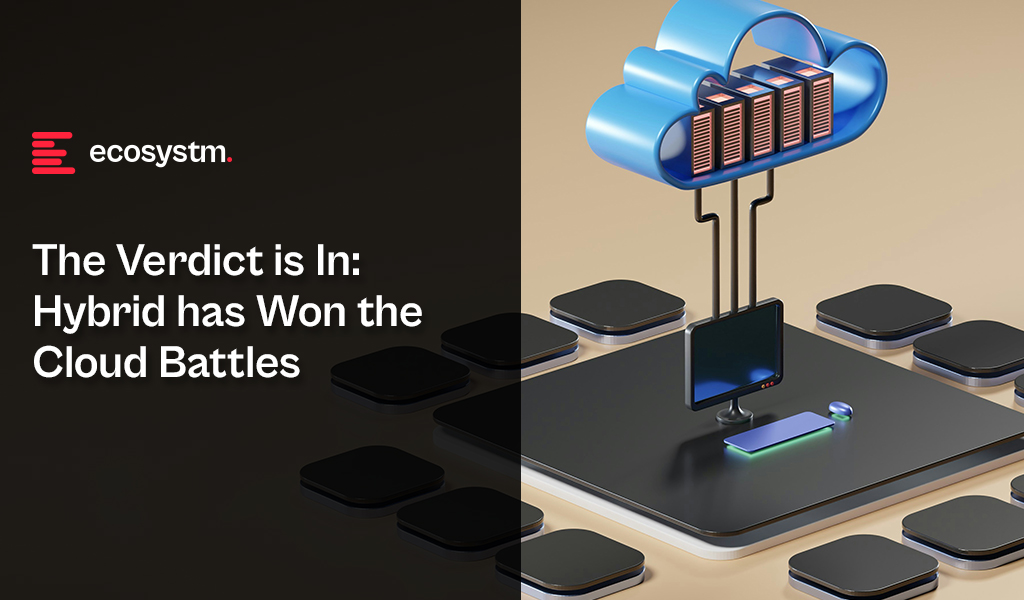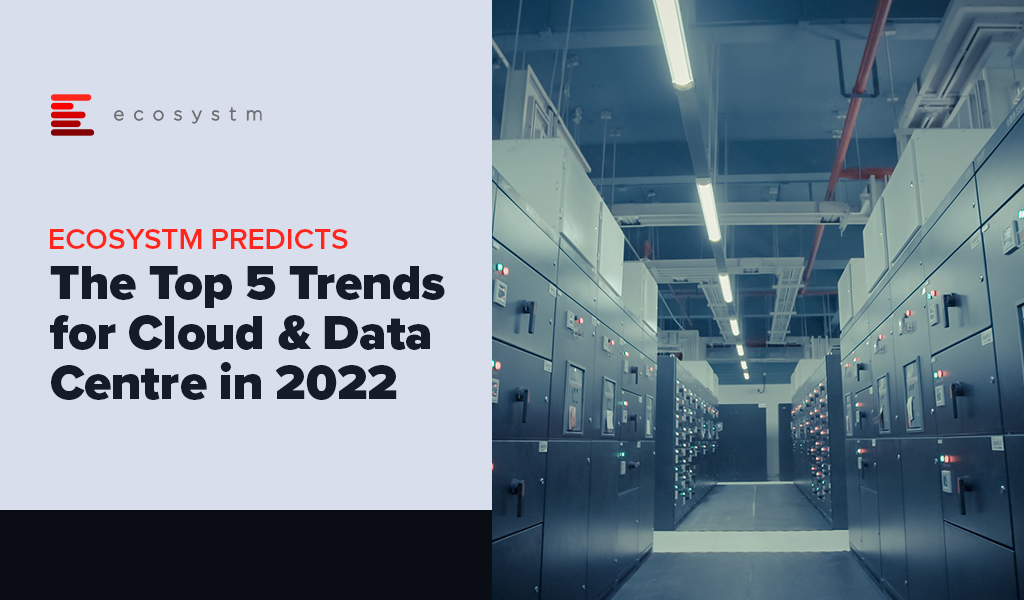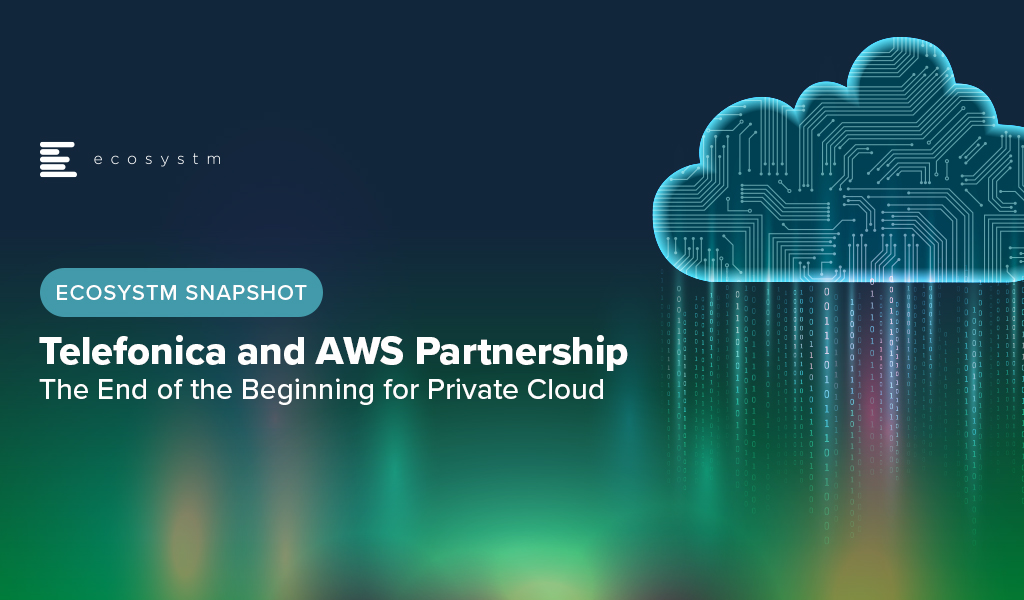At the Nutanix .NEXT 2024 event in Barcelona, it became clear that the discourse around cloud computing has evolved significantly. The debate that once polarised organisations over whether on-prem/co-located data centres or public cloud was better has been decisively settled. Both cloud providers and on-prem equipment providers are thriving, as evident from their earnings reports.
Hybrid cloud has emerged as the clear victor, offering the flexibility and control that organisations demand. This shift is particularly relevant for tech buyers in the Asia Pacific region, where diverse market maturities and unique business challenges require a more adaptable approach to IT infrastructure.
The Hybrid Cloud Advantage
Hybrid cloud architecture combines the best of both worlds. It provides the scalability and agility of public cloud services while retaining the control and security of on-prem systems. For Asia Pacific organisations, that often operate across various regulatory environments and face unique data sovereignty issues, this dual capability is invaluable. The ability to seamlessly move workloads between on-prem, private cloud, and public cloud environments enables enterprises to optimise their IT strategies, balancing cost, performance, and compliance.
Market Maturity and Adoption in Asia Pacific
The region shows a wide spectrum of technological maturity among its markets. Countries like Australia, Japan, and Singapore lead with advanced cloud adoption and robust IT infrastructures, while emerging markets such as Vietnam, Indonesia, and the Philippines are still in the nascent stages of cloud integration.
However, regardless of their current maturity levels, organisations in Asia Pacific are recognising the benefits of a hybrid cloud approach. Mature markets are leveraging hybrid cloud to refine their IT strategies, focusing on enhancing business agility and driving innovation.
Ecosystm research shows that 75% of organisations in Australia have a hybrid, multi-cloud strategy. Over 30% of organisations have repatriated workloads from the public cloud, and only 22% employ a “cloud first” strategy when deploying new services.
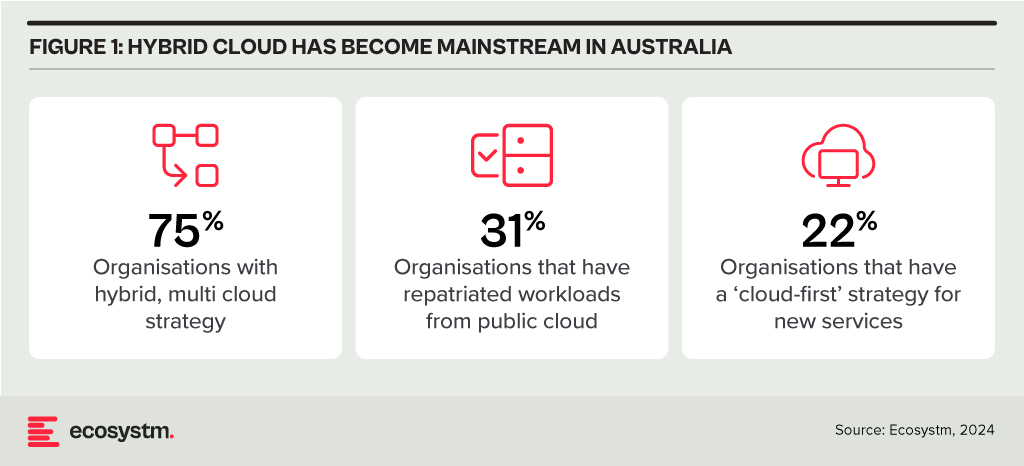
Meanwhile, emerging markets see hybrid cloud as a pathway to accelerate their digital transformation journeys without the need for extensive upfront investments in on-prem infrastructure. Again, Ecosystm data shows that when it comes to training large AI models and applications, organisations across Southeast Asia use a mix of public, private, hybrid, and multi-cloud environments.
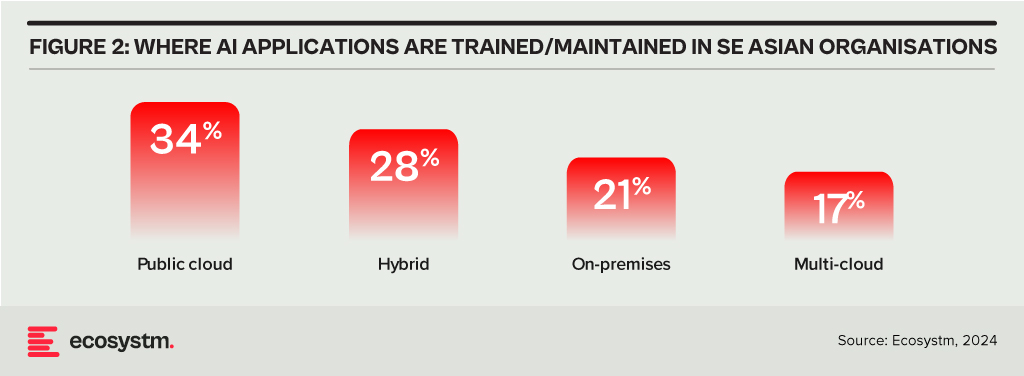
Strategic Flexibility Without Compromise
One of the most compelling messages from the Nutanix .NEXT 2024 event is that hybrid cloud eliminates the need for compromise when deciding where to place workloads – and that is what the data above represents. The location of the workload is no longer a limiting factor. Being “cloud first” locks organisations into a tech provider, whereas agility was once exclusively in favour of public cloud providers. Whether it’s for performance optimisation, cost efficiency, or regulatory compliance, tech leaders can now choose the best environment for every workload without being constrained by location.
For example, an organisation might keep sensitive customer data within a private cloud to comply with local data protection laws while leveraging public cloud resources for less sensitive applications to take advantage of its scalability and cost benefits. I recently spoke to an organisation in the gaming space that had 5 different regulatory bodies to appease – which required data to be stored in 5 different locations! This strategic flexibility ensures that IT investments are fully aligned with business objectives, enhancing overall operational efficiency.
Moving Forward: Actionable Insights for Asia Pacific Tech Leaders
To fully capitalise on the hybrid cloud revolution, APAC tech leaders should:
- Assess Workload Requirements. Evaluate the specific needs of each workload to determine the optimal environment, considering factors like latency, security, and compliance.
- Invest in Integration Tools. Ensure seamless interoperability between on-premises and cloud environments by investing in advanced integration and management tools.
- Focus on Skill Development. Equip IT teams with the necessary skills to manage hybrid cloud infrastructures, emphasising continuous learning and certification.
- Embrace a Multi-Cloud Strategy. Consider a multi-cloud approach within the hybrid model to avoid vendor lock-in and enhance resilience.
Conclusion
The hybrid cloud has definitively won the battle for enterprise IT infrastructure, particularly in the diverse Asia Pacific region. By enabling organisations to place their workloads wherever they make the most sense without compromising on performance, security, or compliance, hybrid cloud empowers tech leaders to drive their digital transformation agendas forward with confidence. Based on everything we know today*, the future of cloud is hybrid. Reform your sourcing practices to put business needs, not cloud service providers or data centres, at the centre of your data decisions.
*In this fast-changing world, it seems naïve to make sweeping statements about the future of technology!
Organisations in Asia Pacific are no longer only focused on employing a cloud-first strategy – they want to host the infrastructure and workloads where it makes the most sense; and expect a seamless integration across multiple cloud environments.
While cloud can provide the agile infrastructure that underpins application modernisation, innovative leaders recognise that it is only the first step on the path towards developing AI-powered organisations. The true value of cloud is in the data layer, unifying data around the network, making it securely available wherever it is needed, and infusing AI throughout the organisation.
Cloud provides a dynamic and powerful platform on which organisations can build AI. Pre-trained foundational models, pay-as-you-go graphics superclusters, and automated ML tools for citizen data scientists are now all accessible from the cloud even to start-ups.
Organisations should assess the data and AI capabilities of their cloud providers rather than just considering it an infrastructure replacement. Cloud providers should use native services or integrations to manage the data lifecycle from labelling to model development, and deployment.
In this Ecosystm Byte, sponsored by Oracle, Ecosystm Principal Advisor, Darian Bird presents the top 5 trends for Cloud in 2023 and beyond. Read on to find out more.
Download ‘The Top 5 Cloud Trends for 2023 & Beyond’ as a PDF

One of the biggest impacts of the pandemic has been the uptick in cloud adoption. Ecosystm research shows that more than half the organisations are either building cloud native applications or have a Cloud-First strategy. Cloud infrastructure, platforms and software became a key enabler of the business agility and innovation that organisations needed to survive and succeed.
However, as organisations look to become data-driven and digital, they will require seamless access to their data, irrespective of where they are generated (enterprise systems, IoT devices or AI solutions) and where they are stored (public cloud, Edge, on-premises or data centres) to unlock the full value of the data and deliver the insights needed. This will shape the Cloud and Data Centre ecosystem in 2022.
Read on to find out what Ecosystm Analysts, Claus Mortensen, Darian Bird, Peter Carr and Tim Sheedy think will be the leading Cloud & Data Centre trends in 2022.
Click here to download Ecosystm Predicts: The Top 5 Trends for Cloud & Data Centre in 2022 as PDF

Earlier this month, Telefónica Germany announced it will use Amazon Web Services (AWS) to virtualise its 5G core for a proof of concept (POC) in an industrial use case and plans to move to commercial deployment in 2021. Part of the POC process is to ensure compliance with all applicable data protection guidelines and certifying them according to relevant industry standards.
“With the virtualisation of our 5G core network, we are laying the foundation for the digital transformation of the German economy. This collaboration with AWS is an important part of our strategy for building industrial 5G networks”, said Markus Haas, CEO of Telefónica Germany.
Sentiment about cloud – especially public cloud – has been on a slight roller-coaster ride since they emerged back in the “noughties”: From initial reluctance to reluctant acceptance – to customer driven enthusiasm to scaling back and migrating back data and apps to on-premises data centres or private clouds to a more recent acceptance, that most enterprise resources may work best in a hybrid or public cloud environment.
Still, the viewpoint of many is still that core resources for the most part belong on-premises – especially if they are essential for the running of the business or involves sensitive data.
It is in this light that the Telefónica Germany announcement is interesting. On the face of it, it may appear that this is a possible major validation of public cloud as a platform for core systems and sensitive data. Although the core network components will remain on a different platform delivered by Ericsson, there is clearly an element of that.
Perception on Public Cloud
Many organisations remain sceptical with regards to public cloud. Ecosystm data shows that almost 40% have private cloud as their primary cloud deployment model (Figure 1); roughly a third have gone for a hybrid model and only around one quarter have chosen a public cloud model.
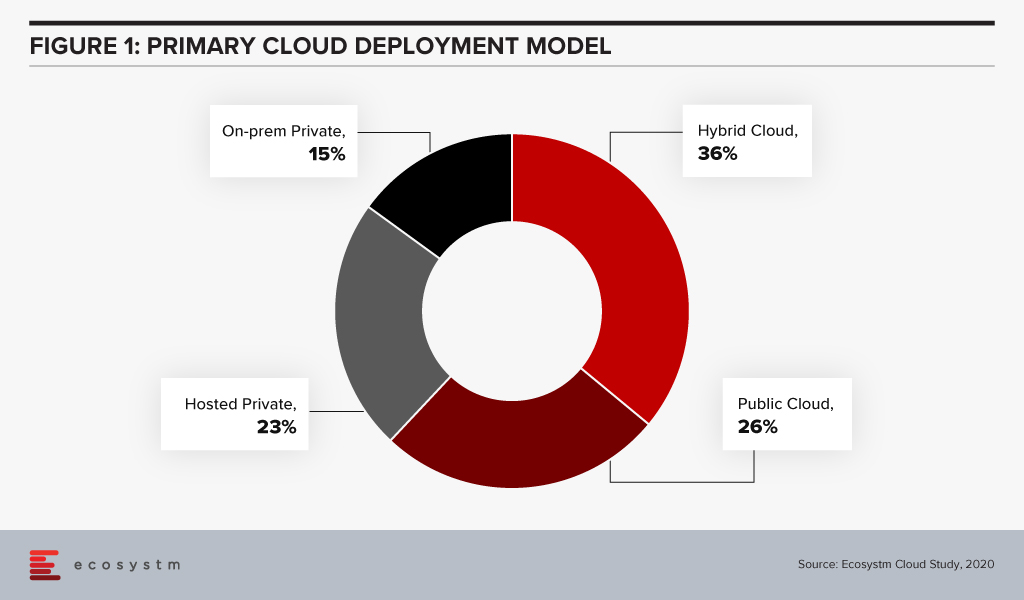
Most cloud deployment strategies ultimately come down to an evaluation of cost vs. risk and this evaluation is clearly demonstrated in Ecosystm data. Close to 80% of those choosing an on-premises private cloud model mention security and compliance as a main reason whereas cost considerations are the main reason for those opting for a public cloud model (Figure 2). What our data also shows is that public cloud providers are not necessarily winning the argument of cost savings among users.
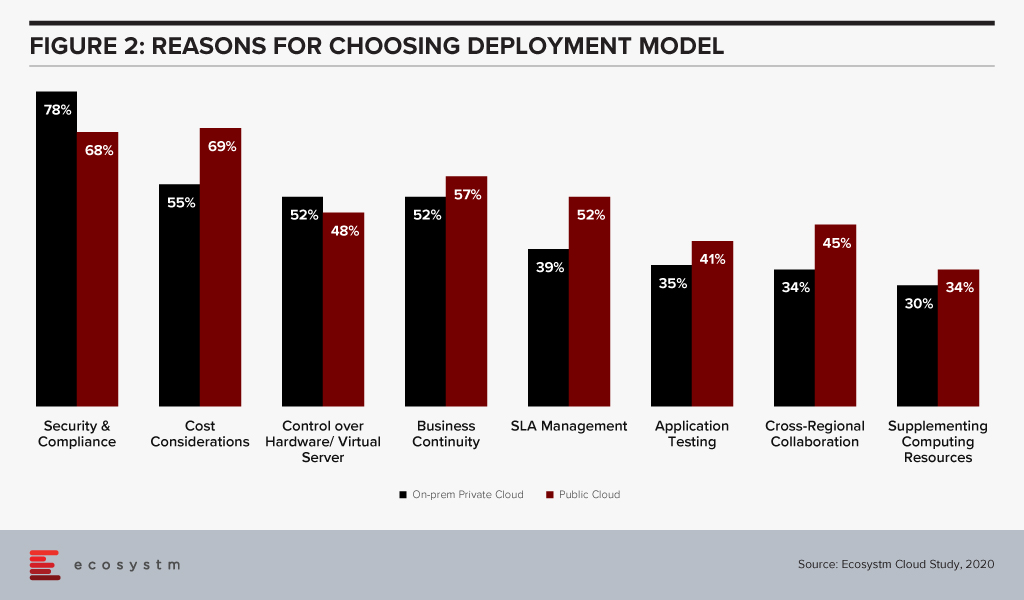
For many organisations today, security and compliance concerns are still a valid point against public cloud as a primary deployment model. However, as we see more and more initiatives like Telefónica Germany, this argument diminishes – and it will become harder for IT organisations to convince senior management that this is still the way to go.
The Edge Complements the Cloud
The other noteworthy take-away from the Telefónica Germany initiative is how cloud-enabled edge computing is being embraced by the network design to ensure lower latencies for those who need it. The company states, “If companies use 5G network functions based on the cloud-based 5G core network of Telefónica Germany / O2 in the future, they will no longer need a physical core network infrastructure at their logistics and production sites, for example, but only a 5G radio network (RAN) with corresponding antennas.”
As I’m sure that you are an avid reader of Ecosystm Predicts every year, this should not come as a surprise as we wrote about something like this in the Top 5 Cloud Trends for 2020. Although some are touting Edge computing as the ultimate replacement of Cloud, we then believed – and still do – that it will be complimentary rather than competing technology. Cloud-based setups can benefit from pushing computing heavy workloads to the Edge in much the same way as IoT and provides a great platform for managing the Edge computing endpoints.
But to go back to the private cloud bit – while private cloud is not going away in the foreseeable future, we may be starting to see its demise in the more distant future.
To paraphrase a famous Brit: Now this is not the end. It is not even the beginning of the end. But it is, perhaps, the end of the beginning for private cloud.
Identifying emerging cloud computing trends can help you drive digital business decision making, vendor and technology platform selection and investment strategies.Gain access to more insights from the Ecosystm Cloud Study.



